- Concord Campus - (925) 687-9555
- Fresno Campus - (559) 222-1903
- Modesto Campus - (209) 521-1821
- Sacramento Campus - (916) 588-2060
- San Jose Campus - (408) 384-7050
- Van Nuys Campus - (747) 200-4567
- Concord Campus - (925) 687-9555
- Fresno Campus - (559) 222-1903
- Modesto Campus - (209) 521-1821
- Sacramento Campus - (916) 588-2060
- San Jose Campus - (408) 384-7050
- Van Nuys Campus - (747) 200-4567
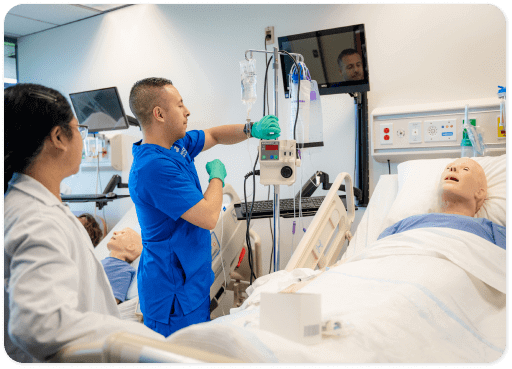
- Concord, CA
- Fresno, CA
- Modesto, CA
- Sacramento, CA
- San Jose, CA
- About the Program
- Goals and Objectives
- Clinical Training
- Length and Schedule
- Requirements
- Admissions Point System
- Career Services
- Program Outline
- Licensure and Certification
- Job Outlook and Salary
- Accreditation and Approval
- Tuition and Fees
- Credit Granting
- Financial Aid
- Testimonials
- FAQ
- Apply now
- External Resources
12 Months Program*
No Experience Necessary
Job Placement Assistance
Veteran and Military Benefits
*48 Approved Instructional Weeks
Please follow the link to get a comprehensive price breakdown for the prerequisite and core parts of the Vocational Nurse Program.
|
TOTAL CORE COST |
$38,208.00 |
|
TOTAL PROGRAM COST, including prereq* *Program fees are subject to change. |
$39,713.00 |
Please follow the link to get a comprehensive price breakdown for the prerequisite and core parts of the Vocational Nurse Program.
|
TOTAL CORE COST |
$38,208.00 |
|
TOTAL PROGRAM COST, including prereq* *Program fees are subject to change. |
$39,713.00 |
Please follow the link to get a comprehensive price breakdown for the prerequisite and core parts of the Vocational Nurse Program.
|
TOTAL CORE COST |
$38,208.00 |
|
TOTAL PROGRAM COST, including prereq* *Program fees are subject to change. |
$39,713.00 |
Please follow the link to get a comprehensive price breakdown for the prerequisite and core parts of the Vocational Nurse Program.
|
TOTAL CORE COST |
$36,673.00 |
|
TOTAL PROGRAM COST, including prereq* *Program fees are subject to change. |
$38,178.00 |
Please follow the link to get a comprehensive price breakdown for the prerequisite and core parts of the Vocational Nurse Program.
|
TOTAL CORE COST |
$38,208.00 |
|
TOTAL PROGRAM COST, including prereq* *Program fees are subject to change. |
$39,713.00 |
About the Vocational Nurse Program
Program Mission
Gurnick Academy of Medical Arts and the Vocational Nurse Program faculty are dedicated to providing qualified individuals with an optimal learning experience to provide the healthcare community with competent vocational nursing professionals who will demonstrate the highest standards of ethics, professionalism, clinical competency, and critical thinking while providing compassionate and respectful patient care.
Program Description
The Vocational Nurse program (VN) utilizes the plan that nursing courses progress along the simple-complex continuum. The organizing principle is homeostasis, which is related to studying representative client problems by addressing the various anatomical systems and specialty areas in nursing. The program includes academic lectures, laboratory training, and a clinical component correlating with theoretical knowledge. As a result of preparation, students can work as vocational nurses in hospitals or medical clinics.
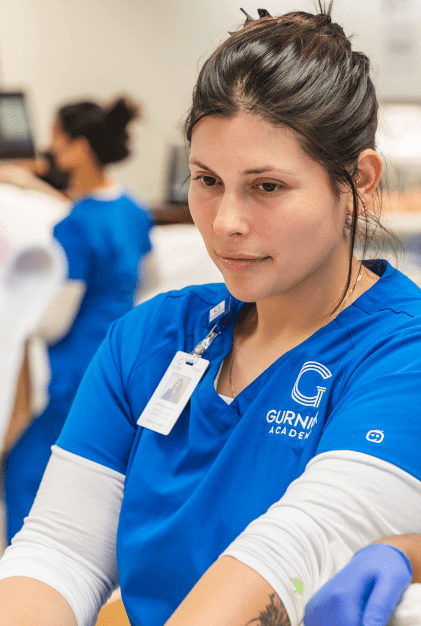

Program Goals and Objectives
Incorporate nursing, behavioral, and physical sciences principles to provide competent care to clients of different ages with different biopsychosocial needs.
Apply knowledge of specific disease conditions in clients’ prevention, treatment, nursing care, and rehabilitation of clients.
Differentiate the role of the Vocational Nurse within the medical team.
Adhere to professional standards incorporating a vocational nurse’s legal and ethical responsibilities.
Utilize critical thinking in assessing, planning, intervening, and evaluating client care within the scope of Vocational Nurse practice.
Organize, prioritize, and delegate care, communicating effectively with medical team members.
Vocational Nurse Program Clinical Training
Gurnick Academy of Medical Arts considers clinical experience essential in healthcare education. Students must be rotated throughout our affiliated medical facilities while attending our nursing school.
Program Information, Length, and Schedule
*(48 Approved instruction Weeks)
The program information, length, and schedule may change. Make sure to read the Catalog and Addendum for updates and changes. Check with an Admission Advisor for details. The Vocational Nurse program is a diploma program.
The Vocational Nurse Program is a diploma program providing a library and classrooms with audiovisual teaching aids, textbooks, journals, anatomical charts, and models. The Instructor-to-Student ratio is 1:15 in the laboratory and clinical externships, 1:30-50 during residential lectures, and 1:25 during online lectures..
Classes enroll twice yearly at the San Jose and Sacramento campuses. Classes begin four times at the Concord, Fresno, and Modesto campuses. Students spend 30 to 40 hours per week attending classes, and the program consists of four (4) modules.
Module One—Monday through Friday
Morning Group students must be available from 9 AM to 2 PM for the lectures/internal clinical experience–four (4) days a week and 6 AM to 2 PM, or 6:30 AM to 2:30 PM for the clinical skill lab – one (1) day a week depending on the campus.
Evening Group students must be available from 5 PM to 10 PM for the lectures/internal clinical experience–four (4) days a week and from 2 PM to 10 PM, 2:30 PM to 10:30 PM, or from 3 PM to 11 PM for the clinical lab–one (1) day a week. (Modesto campus is from 2:30 PM to 10:30 PM). The listed times are approximate.
Module Two, Three, and Four—Monday through Friday
Morning Group students must be available from 9 AM to 2 PM for the lectures/internal clinical experience–three (3) days a week. Evening Group students must be available from 5 PM to 10 PM for the lectures/internal clinical experience–three (3) days a week.
Morning and Evening Groups students must be available two to five (2–5) days per week for the clinical rotations. Regular clinical rotations are 6 AM to 3 PM and 2:30 PM to 11:30 PM. Particular clinical rotations (Ex. OB, Peds, etc.) might require an alternative schedule (Ex. 8 AM to 6 PM, Saturdays, etc.). Students must complete those particular rotations according to the schedule provided.
The curriculum provides students with the technical, clinical, and interpersonal skills necessary to succeed in this challenging field. The expected completion time for this program is 48 weeks, excluding holidays and vacation times. Preparation for NCLEX is provided during the final program module. Students are permitted up to two (2) attempts to pass the exit exam for graduation based on the guidelines in VN 450.
The first attempt is given after program completion. The second attempt is given two (2) weeks after program completion. Under extraordinary circumstances, applicable Students may be eligible for one (1) additional attempt. See the Student Grievance and Appeals Policy for more information.
Class times can and may be rescheduled on an alternate day of the week (Sunday through Saturday) to ensure on-time program completion and fulfillment of required program hours.
Dates may vary by campus location. Please refer to the Academic Calendar for more details.
Requirements
- Admission Requirements
- Performance Requirements
- Graduation Requirements
Please review the following requirements: General Admission Requirements for all programs. Some Campuses (such as if the applicant pool might be larger than the number of available seats at the desired campus location) may require an additional step: an interview with the applicable VN Program Coordinator or designee.
All applicants must meet the following criteria:
- Be at least 17 years of age to be admitted to the Essential Medical Bioscience prerequisites course with parent or guardian consent. Applicants must be at least 18 years of age at the beginning of the core program.
- Complete the Essential Medical Bioscience prerequisites course with a grade of ‘C’ or above.
- Essential Medical Bioscience course is waived as a prerequisite for those who have completed the following courses within the last five (5) years: Cell Biology, Human Biology Basics, Basic Math, and Medical Terminology. A prerequisite course challenge exam is also available for those who are interested.
- Some campuses (such as if the applicant pool might be larger than the number of available seats at the desired campus location) may require an additional step: an interview with the applicable VN Program Coordinator or designee.
Each program has physical and non-physical requirements to ensure our students’ and patients’ safety and welfare. Almost all of our students must be able to do the following: (Check with an Admission Advisor if applicable.)
- Handle stressful situations related to technical and procedural standards and patient care situations.
- Respond quickly and appropriately to emergencies using the English language.
- Communicate effectively with patients and staff in clear English in verbal and written forms.
- Read and interpret (or learn how to) patient charts and requisitions.
- Tolerate strong, unpleasant odors.
- Provide physical and emotional support to the patients during procedures.
- Report clearly and legibly through progress notes in patient charts.
- Meet class standards for successful course completion.
- Collect, interpret, and integrate data about patients.
- Recognize and respond appropriately to individuals of all ages, genders, and races from all socioeconomic, religious, and cultural backgrounds.
- Cope with heavy workloads, demanding patients, and life-threatening clinical situations.
- Recognize and respond appropriately to potentially hazardous situations.
- Demonstrate the physical and emotional capacity to work a 40-hour week on the clinical rotation.
- Behave in an ethical, sound, competent, compassionate, and professional manner in the classroom and the clinic.
- Lift/carry:
- One (1) pound (0.45 kilograms)—five (5) pounds (2.27 kilograms) frequently— image receptors, lead aprons, files.
- 20 pounds (9.07 kilograms)—50 pounds (22.68 kilograms) occasionally— patient transfers and positioning.
- 50 pounds (22.68 kilograms)—70 pounds (31.75 kilograms) rarely to occasionally—patient transfers.
- Stand and walk for up to eight (8) hours per day.
- Carry a minimum of 20 pounds (9.07 kg) while walking a distance of 100 feet (30.48 m).
- Bend or flex the upper trunk forward up to 45 degrees and flex the lower torso into a squatting position.
- Rotate the upper trunk up to 30 degrees to the right and left.
- Reach at least 72 inches (1.83 m) above floor level or an entire arm’s reach.
- Utilize the sense of hearing to communicate effectively with the patients and the healthcare team.
- Utilize the sense of vision in all hospital lighting levels, ranging from low illumination to bright light levels.
- Sit in class for up to six (6) hours per day.
- Palpate anatomical structures and handle injured body parts without causing injury to the patient.
- During exercise, give manual resistance to a patient’s arm, leg, or trunk.
- Move with adequate agility and speed to ensure patient safety.
- Walk and balance well enough to help patients walk and transfer with or without equipment while preventing injury to patients and themselves.
- Safely grasp and manipulate small objects and set dials on electrical equipment.
- Use visual, auditory, and tactile senses to observe patients and collect and interpret data.
- Respond to warning sounds, machine alarms, and calls for help.
The following requirements must be met for a student to graduate from the Medical Assistant program at Gurnick Academy of Medical Arts:
- The successful completion of all program courses and hours.
- All financial obligations, including tuition and textbook charges, have been met.
- The student must have completed the program exit examination. Students will be provided with up to two (2) attempts to complete the exit exam.
Please review the following requirements: General Admission Requirements for all programs. Some Campuses (such as if the applicant pool might be larger than the number of available seats at the desired campus location) may require an additional step: an interview with the applicable VN Program Coordinator or designee.
All applicants must meet the following criteria:
- Be at least 17 years of age to be admitted to the Essential Medical Bioscience prerequisites course with parent or guardian consent. Applicants must be at least 18 years of age at the beginning of the core program.
- Complete the Essential Medical Bioscience prerequisites course with a grade of ‘C’ or above.
- Essential Medical Bioscience course is waived as a prerequisite for those who have completed the following courses within the last five (5) years: Cell Biology, Human Biology Basics, Basic Math, and Medical Terminology. A prerequisite course challenge exam is also available for those who are interested.
- Some campuses (such as if the applicant pool might be larger than the number of available seats at the desired campus location) may require an additional step: an interview with the applicable VN Program Coordinator or designee.
Each program has physical and non-physical requirements to ensure our students’ and patients’ safety and welfare. Almost all of our students must be able to do the following: (Check with an Admission Advisor if applicable.)
- Handle stressful situations related to technical and procedural standards and patient care situations.
- Respond quickly and appropriately to emergencies using the English language.
- Communicate effectively with patients and staff in clear English in verbal and written forms.
- Read and interpret (or learn how to) patient charts and requisitions.
- Tolerate strong, unpleasant odors.
- Provide physical and emotional support to the patients during procedures.
- Report clearly and legibly through progress notes in patient charts.
- Meet class standards for successful course completion.
- Collect, interpret, and integrate data about patients.
- Recognize and respond appropriately to individuals of all ages, genders, and races from all socioeconomic, religious, and cultural backgrounds.
- Cope with heavy workloads, demanding patients, and life-threatening clinical situations.
- Recognize and respond appropriately to potentially hazardous situations.
- Demonstrate the physical and emotional capacity to work a 40-hour week on the clinical rotation.
- Behave in an ethical, sound, competent, compassionate, and professional manner in the classroom and the clinic.
- Lift/carry:
- One (1) pound (0.45 kilograms)—five (5) pounds (2.27 kilograms) frequently— image receptors, lead aprons, files.
- 20 pounds (9.07 kilograms)—50 pounds (22.68 kilograms) occasionally— patient transfers and positioning.
- 50 pounds (22.68 kilograms)—70 pounds (31.75 kilograms) rarely to occasionally—patient transfers.
- Stand and walk for up to eight (8) hours per day.
- Carry a minimum of 20 pounds (9.07 kg) while walking a distance of 100 feet (30.48 m).
- Bend or flex the upper trunk forward up to 45 degrees and flex the lower torso into a squatting position.
- Rotate the upper trunk up to 30 degrees to the right and left.
- Reach at least 72 inches (1.83 m) above floor level or an entire arm’s reach.
- Utilize the sense of hearing to communicate effectively with the patients and the healthcare team.
- Utilize the sense of vision in all hospital lighting levels, ranging from low illumination to bright light levels.
- Sit in class for up to six (6) hours per day.
- Palpate anatomical structures and handle injured body parts without causing injury to the patient.
- During exercise, give manual resistance to a patient’s arm, leg, or trunk.
- Move with adequate agility and speed to ensure patient safety.
- Walk and balance well enough to help patients walk and transfer with or without equipment while preventing injury to patients and themselves.
- Safely grasp and manipulate small objects and set dials on electrical equipment.
- Use visual, auditory, and tactile senses to observe patients and collect and interpret data.
- Respond to warning sounds, machine alarms, and calls for help.
The following requirements must be met for a student to graduate from the Medical Assistant program at Gurnick Academy of Medical Arts:
- The successful completion of all program courses and hours.
- All financial obligations, including tuition and textbook charges, have been met.
- The student must have completed the program exit examination. Students will be provided with up to two (2) attempts to complete the exit exam.
VN Program Admissions Point System
Kindly note that the following table may not apply to some of our campuses. Some campuses may have a non-interview enrollment. Please ask the Admission Advisor for more details.
| 1. Admission | |
|---|---|
| CCAT | 3 |
| Score 16-24 | 1 |
| Score 25-34 | 2 |
| Score 35-45 | 3 |
| Admissions Essay | 6 |
| Resume | 6 |
| Previous Education | 3 |
| HS Diploma or GED | 1 |
| AA/AS Degree | 2 |
| BA/BS Degree and higher | 3 |
| Healthcare Field Experience | 3 |
| 1 Year | 1 |
| 2-4 Years | 2 |
| More Than 4 Years | 3 |
| Prerequisite Course Grades (Points do not appy if credit granted) | 20 |
| A | 20 |
| B | 15 |
| C | 10 |
| Prerequisite Attendance | 15 |
| Missed 0 class | 15 |
| Missed 1 class | 10 |
| Missed 2 classes | 2 |
| Interview Assesment | 75 |
| Interview questions | 50 |
| Appearance/Presentation | 5 |
| Communication skills | 5 |
| Problem-solving/Decision-Making | 5 |
| Prepredness | 5 |
| Responsibility | 5 |
| Total Possible Points Available | 131 |
Career Services

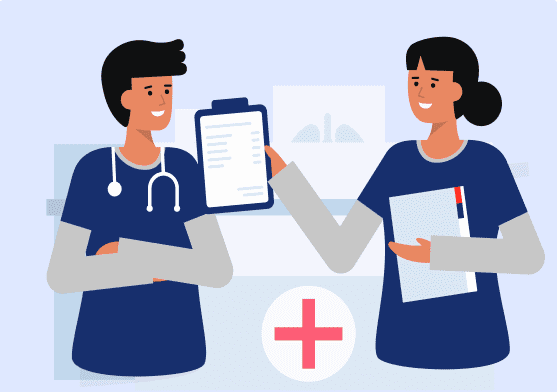




Vocational Nurse Program Outline
| Course Number | Title | Clock Hours | Quarter Credit Hours |
|---|---|---|---|
| VN 100 | Fundamental of Nursing* | 96.0 | 9.5 |
| VN 110 | Anatomy and Physiology | 56.0 | 5.5 |
| VN 120 | Clinical Nutrition | 32.0 | 3.0 |
| VN 130 | Clinical Lab I* | 120.0 | 6.0 |
| VN 200 | Medical/Surgical Nursing I* | 88.0 | 8.5 |
| VN 220 | Clinical II* | 278.0 | 9.0 |
| VN 230 | Pharmacology | 54.0 | 5.0 |
| VN 300 | Medical/Surgical Nursing II* | 96.0 | 9.5 |
| VN 320 | Clinical III* | 278.0 | 9.0 |
| VN 400 | Obstetric Nursing | 40.0 | 4.0 |
| VN 410 | Pediatric Nursing | 40.0 | 4.0 |
| VN 420 | Psychiatric Nursing | 32.0 | 3.0 |
| VN 430 | Clinical IV | 278.0 | 9.0 |
| VN 450 | Capstone | 42.0 | 4.0 |
| Total | 1,530.0 | 89.0 |
*Paired course. See the course description for more details.
Licensure and Certification for Licensed Vocational Nurses
Learn more about the Licensure, Certification, and Registry Disclaimer in the Catalog and Addendum.
Click here for license examination pass rate information.
*Gurnick Academy of Medical Arts has not determined if any programs fulfill the educational requirements for specific professional licensure or certification required for employment outside California unless identified by the program below. It is recommended that students located in or planning to relocate to a state apart from where the program’s physical campus is located research any certification or employment requirements for their intended state.
Job Outlook and Salary
View the O*Net Online 29-2061.00 Licensed Practical and Licensed Vocational Nurses job profile for general information about the profession. Find information about the salary data in California and the major cities near the campus where the program is offered.
- Local Wages for Licensed Practical and Licensed Vocational Nurses in California
- Local Wages for Licensed Practical and Licensed Vocational Nurses in Fresno, CA
- Local Wages for Licensed Practical and Licensed Vocational Nurses in Modesto, CA
- Local Wages for Licensed Practical and Licensed Vocational Nurses in Sacramento–Roseville–Arden-Arcade, CA
- Local Wages for Licensed Practical and Licensed Vocational Nurses in San Francisco-Oakland-Hayward, CA
- Local Wages for Licensed Practical and Licensed Vocational Nurses in San Jose-Sunnyvale-Santa Clara, CA

Accreditation and Approval
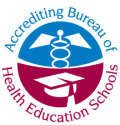
Gurnick Academy of Medical Arts holds national institutional accreditation by the Accrediting Bureau of Health Education Schools (ABHES). ABHES accreditation does not include continuing education courses.
ABHES Mailing Address:
6116 Executive Blvd., Suite 730
North Bethesda, MD 20852
ABHES Phone: 301 291-7550
ABHES Email: Info
ABHES Website: abhes.org
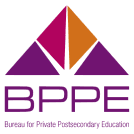
Gurnick Academy of Medical Arts is a private institution approved to operate by the California Bureau for Private Postsecondary Education. Approval to operate means the institution is compliant with the minimum standards in the California Private Postsecondary Education Act (CPPEA) of 2009 (as amended) and Division 7.5 of Title 5 of the California Code of Regulations. CPPEA governs the Bureau for Private Postsecondary Education.
The Office of Student Assistance and Relief is available to support prospective students, current students, or past students of private postsecondary educational institutions in making informed decisions, understanding their rights, and navigating available services and relief options. The office may be reached by calling 888-370-7589, option #5, or by visiting osar.bppe.ca.gov.
BPPE Mailing Address:
1747 N. Market Blvd., Suite 225
Sacramento, CA 95834
BPPE Phone: 888-370-7589
BPPE Email: General
BPPE Website: bppe.ca.gov
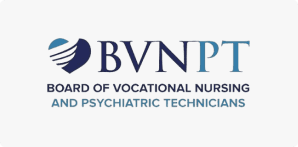
Gurnick Academy of Medical Arts is approved by the Board of Vocational Nursing and Psychiatric Technicians (BVNPT) to provide the Vocational Nurse program.
BVNPT Mailing Address:
2535 Capitol Oaks Drive, Suite 205
Sacramento, CA 95833
BVNPT Phone: 916-263-7800
BVNPT Email: General
BVNPT Website: bvnpt.ca.gov
Vocational Nurse Program Tuition and Fees
The table below reflects the upcoming future starts only.
| VOCATIONAL NURSING PROGRAM FEES Sacramento Campus (July 2024 Start)* | COST |
|---|---|
| Registration Fee (Non-Refundable) | $100.00 |
EMB (PREREQUISITES) | |
| Student Tuition Recovery Fund (Non-Refundable) | $0.00 |
| Prerequisite Tuition Fee | $1,500.00 |
| TOTAL PREREQUISITES COST | $1,600.00 |
| Please note that Prerequisites are not Financial Aid Eligible. | |
CORE PROGRAM | |
| Student Tuition Recovery Fund (Non-Refundable) | $90.00 |
| Books (Non-Refundable if accessed) | $375.00 |
| Tuition Fee | $36,108.00 |
| TOTAL CORE COST | $36,573.00 |
| TOTAL PROGRAM COST including prereq | $38,173.00 |
| VOCATIONAL NURSING PROGRAM FEES Concord, Fresno, Modesto, & San Jose (July 2024)* | COST |
|---|---|
| Registration Fee (Non-Refundable) | $100.00 |
EMB (PREREQUISITES) | |
| Student Tuition Recovery Fund (Non-Refundable) | $0.00 |
| Prerequisite Tuition Fee | $1,500.00 |
| TOTAL PREREQUISITES COST | $1,600.00 |
| Please note that Prerequisites are not Financial Aid Eligible. | |
CORE PROGRAM | |
| Student Tuition Recovery Fund (Non-Refundable) | $95.00 |
| Books (Non-Refundable if accessed) | $375.00 |
| Tuition Fee | $37,638.00 |
| TOTAL CORE COST | $38,108.00 |
| TOTAL PROGRAM COST including prereq | $39,708.00 |
Tuition fees are subject to change.*
Alumni Grant (for Gurnick Academy of Medical Arts Medical Assistant Graduates): $1,500.00.
Don’t hesitate to contact your Admissions Advisor for more details on how you can qualify for this grant.
Credit Granting for Vocational Nurse Program
Credits earned from courses or programs accredited by an agency recognized by the United States Department of Education (U.S.DOE) or the Council for Higher Education Accreditation (CHEA):
- Vocational or practical nursing courses.
- Registered nursing courses.
- Psychiatric courses.
- Armed Services nursing courses.
- Certified nurse assistant courses.
- Other courses the school determines are equivalent to courses in the program.
- Competency-based credit is granted for knowledge and skills acquired through experience. Written and practical examinations will determine credit.
VN Program (only): Students who fail VN440 may submit proof of passing the NCLEX-PN exam to obtain credit for VN440 and graduate from the VN Program. All other graduation requirements (i.e., zero account balance) must also be met to qualify for graduation status.
Financial Aid
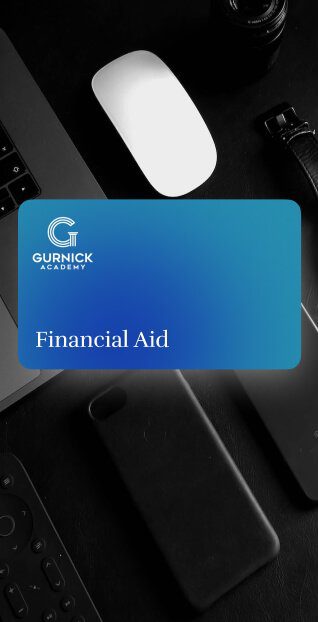
Gurnick Academy of Medical Arts aims to help every student obtain Financial Aid* to attend their chosen program. Gurnick Academy of Medical Arts participates in various federal and state student financial assistance programs.
The financial aid programs are designed to assist students with inadequate financial resources to meet their education’s total cost. Each campus has a Financial Aid Advisor who can help students with any financial aid questions.
For more information, please visit our Financial Aid page.
*for those who qualify
Students' and Graduates' Testimonials

Sandra Flores
Vocational Nurse Program
My personal experience at Gurnick was a good one. I learned so much while being in nursing school. I can honestly say that I built genuine relationships with my instructors and classmates. I can proudly say today that I am officially Nurse Sandy 👩🏻⚕️ A Hospice Nurse.

Caitlin Gifford
Vocational Nurse Program
Nursing is not for everyone. It takes a different way of understanding. It takes empathy, compassion, hard work, tenacity, and coffee…lots of coffee! Gurnick has given me the opportunity to pursue my education, along with the values and responsibilities it takes to become the best nurse I can.

Rachael Byrne
Vocational Nurse Program
I have found Gurnick to be a much more personable and resourceful program to be part of. The program is challenging but students are incredibly well supported with access to instructors and resources to perform their best.
Frequently Asked Questions
Please choose from the dropdown to review a category of FAQs
-
The definition of a Licensed Vocational Nurse (LVN) is an entry-level healthcare provider who is responsible for rendering basic nursing care within a directed scope of practice.1 While performing a limited range of nursing functions, he or she practices under the direction of a Physician, Registered Nurse, or other advanced healthcare professional.2
He or she has also passed the NCLEX-PN examination and is licensed by a state board of nursing, which allows them to provide patient care.
Citations
1 “Licensed Vocational Nurse Scope of Practice.” Texas Board of Nursing, Texas.Gov. 2013. (Accessed March 31, 2022.)
2 “Licensed Vocational Nurses.” Board of Vocational Nursing and Psychiatric Technicians (BVNPT). The State of California. 2022. (Accessed March 15, 2022.) -
Yes, a Registered Nurse’s role is a higher level of education, pay, and skill than a Licensed Vocational Nurse’s role. Based on geographic and workplace requisites, one may be eligible for a role as a Licensed Vocational Nurse by completing either:
a) Vocational Nurse Diploma program;
<OR>
b) An Associate of Science (A.S) in Vocational Nursing program. At Gurnick Academy, completion is as follows:
- A Vocational Nursing Diploma program takes roughly *12 months or *48 approved instructional weeks to complete.
<OR>
- An Associate of Science degree takes approximately 8 months to complete. However, enrolling in an A.S. in Vocational Nursing program requires prior completion of a VN Diploma program, then eight *(8) months or *30 approved instructional weeks.
(See the above bullet.)
Other schools often integrate general educational courses, so students graduate with an ASVN, not just the VN Diploma. Gurnick Academy students complete the diploma program before applying to the AS in Vocational Nursing program. Vocational Nursing students from either program must sit for and pass the NCLEX-PN.
On the other hand, a Registered Nurse (RN) is someone who has completed a higher level of education and sat for and passed the NCLEX-RN.
To be considered a Registered Nurse, one must complete either an associate’s or bachelor’s degree in nursing. Associate degree programs may include the following:
Bachelor’s degree programs may consist of the following:
-
Within the U.S., Licensed Vocational Nurses are referred to as Licensed Practical Nurses, except in two regions.1 In California and Texas, these same professionals are termed Licensed Vocational Nurses. Generally speaking, titles denote the same positions within nursing for general rank, staff, education, pay, and scope.
Citation
1 Admin. “Difference Between LPN and LVN.” Compare the Differences Between Similar Terms. 2011. (Accessed March 31, 2022.)
-
Usually, these titles are used interchangeably by laypersons and patients for general understanding, then applied as reference points among similar roles. Titles differ between geographic locations, such as what a nurse is called in England versus what one is called in New York, with slight differences in duties and responsibilities.
According to O*NET, Licensed Vocational Nurses use other terms, including:
- Charge Nurse
- Clinic Licensed Practical Nurse (Clinic LPN)
- Clinic Nurse
- Home Health Licensed Practical Nurse (Home Health LPN)
- Licensed Vocational Nurse (LVN)
- Office Nurse
- Pediatric LPN (Pediatric Licensed Practical Nurse)
- Private Duty Nurse
- Radiation Oncology Nurse
- Triage LPN (Triage Licensed Practical Nurse).1
Within the U.S., state regulations govern title usage, and one term may not be automatically transferable.
Citation
1 “29-2061.00-Licensed Practical and Licensed Vocational Nurses.” O*NET Online, National Center for O*NET Development. (Accessed February 28, 2022.)
- Charge Nurse
-
The question isn’t whether something is simple or complex. The length, training, and scope of professional practice for a Licensed Vocational Nursing route represent time and educational commitment. The program requires a commitment to the profession.
-
You must be at least 17 years of age to be admitted to the Essential Medical Bioscience prerequisites course with parent or guardian consent. Applicants must be at least 18 years of age at the beginning of the core program.
-
You can fill out our online contact form to have information mailed to you or a school representative contact you. Or you can call us at 1-877-GURNICK.
-
Learn more info about admission requirements.
-
Please find more info about the foreign transcript/diploma evaluation process.
-
Please find more info about the foreign transcript/diploma evaluation process.
-
Please click on the link for more info about the CCAT exam.
-
To qualify for the Vocational Nurse program, you must pass the CCAT exam.
-
Please click on the link for more info about the CCAT exam.
-
Regardless of degree or background, all applicants must pass the entrance exam before admission into the program.
-
Click on the link to learn more about the prerequisite courses for the VN program.
-
Our prerequisite courses are offered before each program start date, usually twice per year.
-
It is approximately ten (10) weeks or 80-course hours.
-
Prerequisites are separate from the program and are not included in the program length.
-
Click on the link to learn more about our VN program accreditation.
-
We have flexible payment options and options for private student loans.
-
Learn more about program length and schedule.
-
Learn more about our program length and schedule.
-
Please find more info in the Catalog and Addendum.
-
Please find more info in the Catalog and Addendum.
-
View the Addendum to review all scheduled breaks during the school year.
-
Review the Catalog and Addendum for information about limitations to acceptance into the Vocational Nurse program.
-
The Board of Vocational Nursing and Psychiatric Technicians (BVNPT) requires a background check for state licensure. If your criminal history involves violent, substance abuse, and sexually violent crimes, clinical facilities may deny your participation.
-
The program is considered a full-time program, even though students are not required on campus full-time.
-
Students cannot switch back and forth between day and evening classes. Students can enroll only in the day schedule or night schedule (not both).
However, special circumstances may be accommodated at the discretion of the instructor or program director.
-
With careful time management, many students have maintained part-time employment and have completed the program.
-
Licensed Practical and Licensed Vocational Nurses work in many settings, including nursing homes, extended care facilities, hospitals, physicians’ offices, and private homes. Most work full-time.1
Citation
1 Bureau of Labor Statistics, U.S. Department of Labor, Occupational Outlook Handbook, Licensed Practical and Licensed Vocational Nurses. (Accessed April 26, 2022.)
-
Learn more about our program length and schedule.
-
An externship will be provided for all of our students.
-
Your externship will be provided through our affiliated clinical facilities. These facilities consist of hospitals, outpatient imaging facilities, and private doctors’ offices. It is the student’s responsibility to commute to the various externship sites. The list of clinics is fluid and ever-changing.
-
Learn more about our program length and schedule.
-
All externships are unpaid.
-
All students will be continually evaluated by the program director/clinical coordinator and the student’s clinical instructor. These evaluations will take place at the externship site(s). All students will be notified in advance of their upcoming evaluations.
-
One may take a Licensed Vocational Nursing route as a bridge en route to a Registered Nursing career, or one may stop at the LVN level. Some students stop, work, and then later enter an RN route. Other students never become LVNs but instead follow a direct pathway to becoming RNs.
While there are various options for the profession, nursing education is seldom lost on any student and can often be used in multiple ways, places, times, and settings.
-
To view the fee breakdown, please see our program fees section.
-
Prerequisites are billed separately from the program and are not included in the program cost.
-
Click on the link for more info about program fees.
-
Financial aid is available for those who qualify. Gurnick Academy of Medical Arts participates in various federal and state student financial assistance programs.
-
Contact the Financial Aid Department if you have questions about Sallie Mae loans.
-
The Vocational Nurse Program is a diploma program.
-
Yes, we assist with job placements for all students who complete the program. However, we cannot guarantee employment.
-
NCLEX test preparation is strongly emphasized throughout our students’ entire curriculum at Gurnick Academy of Medical Arts. We also teach NCLEX preparation classes towards the program’s end and conduct reviews and optional NCLEX preparation courses.
-
Yes. However, Licensed Vocational Nurses are limited in scope and practice and must be supervised by a physician, Registered Nurse, or an Advanced Practice Registered Nurse (APRN).1
Citation
1 “Nursing Licensure and Scope of Practice in California.” Nursing Explorer. (Accessed April 25, 2022.)
-
According to U.S. News and World Report, Licensed Vocational Nurses received an overall score of 6.3 out of ten in job satisfaction. LVNs ranked #4 in Best Jobs Without a College Degree, #5 in Best Health Care Support Jobs, and #20 in Highest Paying Jobs Without a Degree.
Ratings are determined according to their ability to offer an elusive mix of factors, including stress, education, flexibility, work-life balance, and other factors.1
Citation
1 “Licensed Practical and Licensed Vocational Nurse Overview.” U.S. News and World Report, L.P. 2022. (Accessed April 26, 2022.)
-
According to U.S. News and World Report, Licensed Vocational Nurses made a median salary of $48,820 in 2020. The best-paid 25 percent earned $57,860 yearly, while the lowest-paid 25 percent made $42,060.1 In California, Licensed Vocational Nurses have a mean annual salary of $64,090.1
Citation
1 “Licensed Practical and Licensed Vocational Nurse Overview.” U.S. News and World Report, L.P. 2022. (Accessed April 26, 2022.)
-
Beyond helping, caring, and serving others, many Licensed Vocational Nurses report general satisfaction within their professions. According to U.S. News and World Report, LPNs/LVNs receive a score of 6.3 out of ten in overall satisfaction and rank #4 in Best Jobs Without a College Degree and #5 in Best Health Care Support Jobs. They also rank #20 in Highest Paying Jobs Without a Degree. Jobs are judged according to their ability to offer an elusive mix of factors, including stress, education, flexibility, work-life balance, and other factors.1
Citation
1 “Licensed Practical and Licensed Vocational Nurse Overview.” U.S. News and World Report, L.P. 2022. (Accessed April 26, 2022.)
-
According to the online resource, Minority Nurse, poor management, and the lack of support from their management teams are among the most significant complaints nurses report.
What makes a poor manager? Nurses may say it is a manager who doesn’t value open communication and feedback from their staff.1 Another chief complaint within the profession seems to be burnout. Most often, burnout is due to staffing shortages.1
Citation
1^a, b Johnson, Nachole. “Why Good Nurses Leave the Profession.” Minority Nurse, Springer Publishing Company. December 13, 2018. (Accessed April 26, 2022.)
-
According to the U.S. Bureau of Labor Statistics, employment of Licensed Practical and Licensed Vocational Nurses is projected to grow nine percent from 2020–2030, about as fast as the average for all occupations.1
Citation
1 Bureau of Labor Statistics, U.S. Department of Labor, Occupational Outlook Handbook, Licensed Practical and Licensed Vocational Nurses. (Accessed April 26, 2022.)
-
According to Indeed.com, most commonly asked interview questions for Licensed Vocational Nurses include the following:
- Why do you want to work here?
- Why did you become an LVN/LPN?
- Why did you leave your previous position?
- Where do you see yourself in five years?
- What are your biggest strengths?
- What are your biggest weaknesses?1
Citation
1 Indeed Editorial Team. “31 Interview Questions for LPNs and Example Answers.” Indeed Career Guide. June 23, 2021. (Accessed April 26, 2022.)
-
According to O*NET, some of the tools Licensed Vocational Nurses use include the following items.
- Hypodermic needles—hollow needles; intramuscular needles; intravenous IV needles; subcutaneous hypodermic needles.
- Intravenous or arterial infusion bags or containers—bag infusion systems; closed infusion systems; open infusion systems; safety infusion systems.
- Nebulizers—electronic compressor nebulizers; pediatric nebulizers; portable nebulizers; ultrasonic nebulizers.
- Patient stabilization or fall prevention devices—ankle restraints; gait belts; lap belts; and restraints.
- Spirometers—handheld spirometers; personal computer PC-based spirometers; pocket spirometers; pulmonary function testing PFT equipment.1
Citation
1 “29-2061.00–Licensed Practical and Licensed Vocational Nurses.” O*NET OnLine, National Center for O*NET Development. (Accessed February 28, 2022.)
-
Licensed Vocational Nurses observe patients, perform basic assessments, and report and document changes in patient conditions. They also measure vital signs, perform medical treatments, and administer physician-prescribed medications.1 LVNs must be supervised by physicians, Registered Nurses, or APRNs.2
Citations
1 Detailed Guide for Licensed Practical and Licensed Vocational Nurses in Fresno County. Employment Development Department. The State of California. 2022. (Accessed April 25, 2022.)
2 —. “Nursing Licensure and Scope of Practice in California.” Nursing Explorer. (Accessed June 9, 2022.)
-
Yes, in California, a Licensed Vocational Nurse may withdraw blood.1 An LVN may administer fluids, medication, Total Parenteral Nutrition (TPN), blood or blood products via central venous catheters and central lines. They may access these lines for blood draws and administration of emergency cardiac medications via IV push if the following occurs: The LVN/LPN has a current ACLS certification.2, 3
Citations
1 “Nursing Licensure and Scope of Practice in California.” Nursing Explorer. (Accessed April 25, 2022.)
2 “Can an LVN Draw Blood in California.” SeniorCare2Share. December 17, 2021. (Accessed April 25, 2022.)
3 “Frequently Asked Questions.” Board of Vocational Nursing and Psychiatric Technicians (BVNPT). The State of California. 2022. (Accessed April 26, 2022.)
-
The BVNPT Board will consider a Licensed Vocational Nurse as competent to start and superimpose intravenous fluids via primary or secondary infusion lines who have completed one of the following:
(a) A course in intravenous therapy approved by the Board.
(b) Submitted certification, satisfactory to the Board, by one of the persons specified that the licensee has been instructed in the subject areas specified and that the licensee has the knowledge, skills, and abilities to practice venipuncture safely.1
Citation
1 “Intravenous Therapy.” Board of Vocational Nursing and Psychiatric Technicians (BVNPT). The State of California. 2022. (Accessed April 26, 2022.)
-
Every institution has different policies, procedures, rules, and regulations. Further, states vary in Licensed Vocational Nurses’ scopes of practice. Generally, an LVN may give oral pain medication and insulin injections as prescribed by physicians. LVNs can often provide oral chemotherapy drugs, watching closely for side effects after the medication has been given.1
Citation
1 “Can LPNs Administer Medication?” Practical Nursing.org. 2022. (Accessed April 26, 2022.)
-
Yes, in California, a Licensed Vocational Nurse may administer medications, including injections and immunizations, and perform skin tests. LVNs who have completed IV therapy training may also start, manage, and discontinue intravenous lines.1 An LVN may administer fluids, medication, Total Parenteral Nutrition (TPN), blood, or blood products via central venous catheters and central lines. They may access these lines for blood draws and administration of emergency cardiac medications via IV push if they have current ACLS certification.2 However, she or she may not prescribe these procedures.
Citations
1 “Nursing Licensure and Scope of Practice in California.” Nursing Explorer. (Accessed April 25, 2022.)
2 “Can an LVN Draw Blood in California.” SeniorCare2Share. December 17, 2021. (Accessed April 25, 2022.)
-
The board of nursing in each state defines what level of care Licensed Vocational Nurses can and can’t provide through an official document called their “scope of practice.”1
Citation
1 “Frequently Asked Questions.” Board of Vocational Nursing and Psychiatric Technicians (BVNPT). The State of California. 2022. (Accessed April 26, 2022.)
Have Questions? We Are Here To Help!
Apply Now Form
If you are a person who is deaf, hard of hearing, or speech-disabled, please Dial 711 to place a call through California Relay.


 Diploma Program
Diploma Program